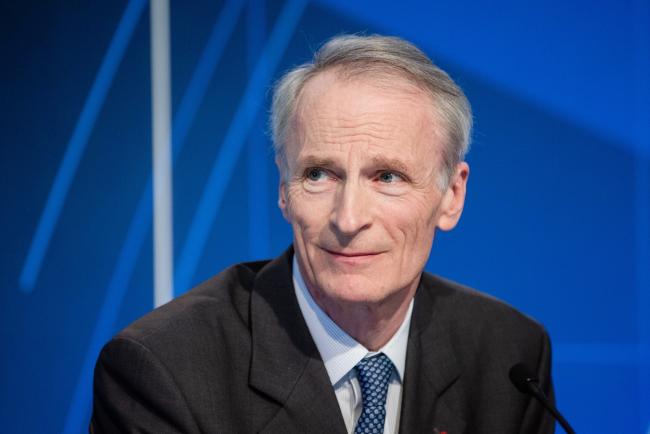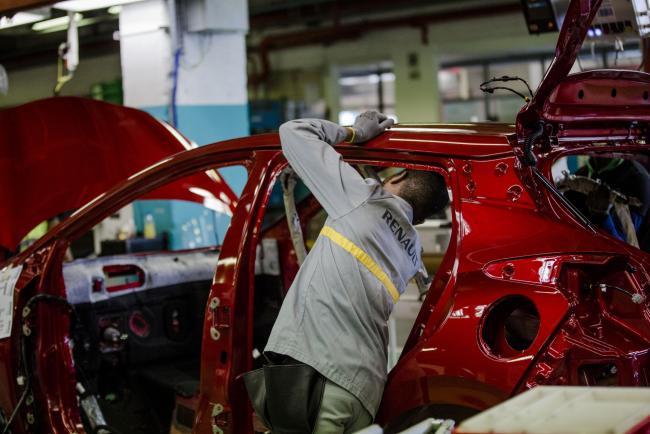(Bloomberg) -- Shortly after 9 p.m., as the sun began to set on the rotund glass facade housing Renault (PA:RENA) SA’s headquarters on the outskirts of Paris, the board called a break. The group had gathered for the second time in as many days to sign off on a proposed merger with Fiat Chrysler Automobiles NV. As the talks dragged on, a delegate for the state asked to liaise with Finance Minister Bruno Le Maire, who was having dinner back in town at his hulking ministry protruding into the River Seine.
Le Maire laid down a red line for Martin Vial, his representative at the table and the voice of Renault’s biggest and most powerful shareholder. France wanted a commitment from Renault partner Nissan Motor Co. to back the combination. Abstention -- as signaled earlier by the Japanese side -- wasn’t good enough, Le Maire said, fearing that Nissan might begin undermining the alliance if it couldn’t be held accountable with a firm vote.
Back in the conference room, the servings of sushi and pizza sourced by security guards had lost their appeal by the time the group reconvened around 11 p.m. The mood, too, was drab. It quickly became clear that Nissan would, in fact, abstain in a vote. When the turn came to Vial to speak, he presented the panel with the government’s game plan.
The minister saw an opening to get Nissan on board: over the weekend, G-20 finance ministers are gathering in Fukuoka, Japan, and Le Maire wanted to use his persuasive powers to win over the Japanese partner. Then, to everyone’s surprise and some annoyance, Vial suggested they postpone the vote and reconvene the following week after Le Maire had returned.
No More Patience
Over in Italy, meanwhile, John Elkann’s patience was wearing thin. The scion of the Agnelli family and disciple of the late Fiat CEO Sergio Marchionne was also getting updates on the meeting back in Paris, and to him, this latest government curve ball was one too many. Elkann had spent weeks stitching together the deal with Renault CEO Jean-Dominique Senard, keeping the French government closely informed, and felt that he had met their demands at every turn. An hours-long board meeting on Tuesday had ended without a vote because representatives wanted more time, and now Elkann’s appetite for further delays was exhausted.
After a brief phone conversation with Senard back in Paris, the 43 year-old orchestrated a stunning maneuver. He gathered the Fiat Chrysler board members for a quick meeting, where the group decided to withdraw its proposal to merge. Shortly after 1 a.m., the company sent a terse release, all but blaming the French government for the decision by saying the country lacked the “political conditions” to support the accord.
And so imploded one of the most ambitious global mergers in recent years, less than two weeks after it was first disclosed, an audacious plan to emulsify diverse car brands from France, the U.S., and Italy into the world’s No. 3 -- with the promise of reaching the pinnacle if Japan could later be brought into the fold.
This account of the final days of the negotiations leading up to the midnight breakdown is based on accounts from people close to the situation, who asked not to be identified discussing private deliberations. The carmakers and the government declined to comment on the meetings.
Good Relationship
In the run-up to the shocking collapse, all sides had appeared on a path to get the deal through. Elkann and Senard had built a close rapport in recent weeks, frequently meeting in Paris or Turin for informal gatherings to hammer out the finer points. The two European companies also made sure to keep the door open for Nissan should the Japanese partner want to join the group at a later stage.
The French government, with its 15% stake in Renault that comes with powerful double voting rights, also showed support, albeit with some strings attached: the merger should function within the Renault-Nissan framework and not jeopardize the successful partnership; jobs and production sites in France needed to be protected; governance should be maintained; and the group should participate in a project to create a European battery champion.
Nissan’s role in particular was an important sticking point for the government. Senard traveled to Japan in the week after the deal was disclosed for an alliance board meeting, where he took the opportunity to lay out the virtues of the combination with Fiat. France wanted Nissan firmly behind the deal, fearing that any opposition -- or even just lukewarm support -- would risk alienating a cherished industrial partner over time.
But as the Renault board prepared to meet on June 4 at the headquarters, Nissan’s position became increasingly precarious. CEO Hiroto Saikawa said the Japanese company needed to review the future of the alliance, including contractual relationships, culminating in Nissan’s decision to abstain from a vote. In the end, the first gathering wrapped up without any firm outcome, the group having spent an hour instead poring over the latest findings linked to disgraced former CEO Carlos Ghosn. They agreed to reconvene the next day.
Weary Heads
By the time the panel regrouped at 6 p.m. on Wednesday, the weariness of the inconclusive meeting had blown over, and optimism set in that the second attempt would push things along. A press conference had been tentatively arranged in Paris for the following day, the release all but prepared and Fiat Chrysler CEO Mike Manley flying in from the U.S. for the occasion. The French CGT labor union was the only negative voice at the table, but one that could be easily drowned out from the overwhelming chorus of support.
Then the great plan came crashing down, with Bloomberg News reporting in the small hours of Thursday that Fiat had withdrawn its offer.
The French government, for its part, was stunned by Elkann’s move, and needed a few hours to regain its footing. When it did, the blame game didn’t take long to erupt. Unwilling to be seen as the disrupting factor, the government said it hadn’t closed any doors, and that all it had asked for was another five days to win over Nissan. Topics like valuation, governance and jobs had been agreed upon, a French official told reporters during a briefing.
Renault, too, lamented the breakdown of the negotiations, thanking Nissan for its “constructive approach” to the deliberations and Fiat for its efforts. Fiat, on the other hand, saw the French state as the culprit, saying the government repeatedly attempted to change conditions for its support and leaving Elkann with the impression that the state was clamoring for full control of the combined entity, a demand that was unacceptable to Fiat.
“When it becomes clear that the discussions have been taken as far as they can reasonably go, it is necessary to be equally decisive in drawing matters to a close,” Elkann said in a letter to employees.
In doing so, Elkann took a page from the deal book of his mentor Marchionne, who died last year following an illness and who had been a tireless champion of consolidation in the automotive industry.
“It’s as important to walk away from the table as it is to sit down,” Marchionne said in 2014.
(Updates with comment from Elkann letter in third-to-last paragraph.)

